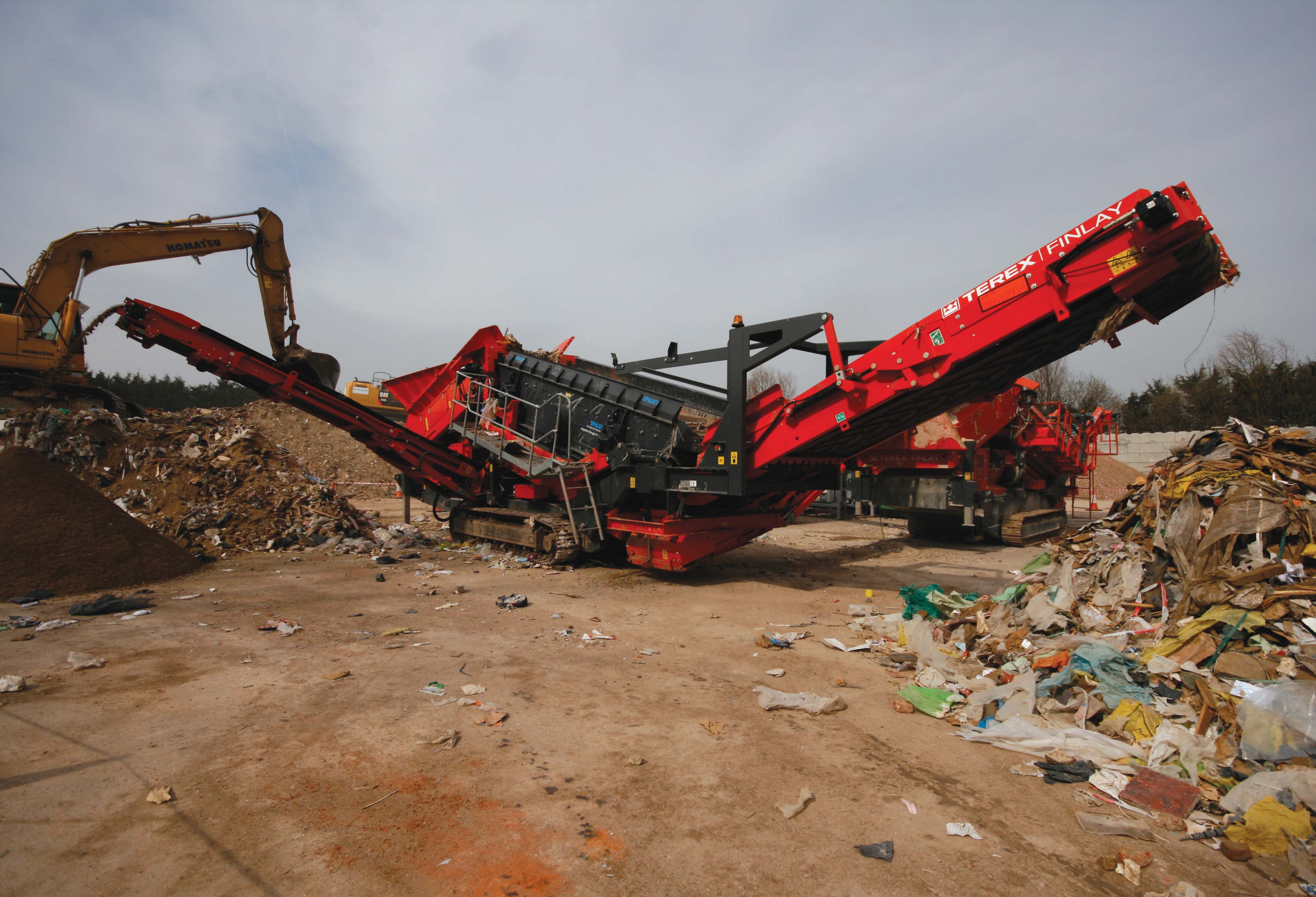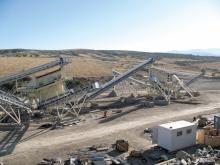
The
The new screener, combining Terex Finlay’s heavy-duty 883 with Spaleck’s 3-D combi Flip-Flow design, may be able to help address issues resulting from the classification of trommel fines for UK Landfill Tax.
Trommel and screen fines are now classed as non-inert due to the contamination from plastic, wood and other biodegradable waste that is likely to be present, meaning their disposal is charged at a much higher rate of Landfill Tax than inert waste, representing a massive difference in cost for those involved in the waste processing industry.
It is said that the high level of separation that can be achieved with the 883 Spaleck produces a very clean 0-10mm fine, which when processing C & D waste may be mostly composed of particles classed as inert, such as sub-soil and clay, and they might not need to go to landfill at all.
Key to this is said to be the introduction of the Flip-Flow bottom deck on the 883 screener, which uses rubber panels that move in a wave action, as well as expand and contract, to keep the waste constantly in motion. This breaks down sticky material, such as clay and soil, making it possible to produce a 0-10mm fine with minimal contamination from non-inert material such as wood and plastic, which will generally fall into the +10mm particle band.
Waste enters the top deck, which comprises four 3-D screening segments formed from open surface panels. As well as preventing waste from becoming caught in the surface and reducing downtime for clearance, this process, which is virtually blockage free, also ensures long, thin pieces cannot pass through to the bottom layer, thereby reducing wear and tear on the lower deck mesh.
The deck panels, 16 on the 3-D top layer and ten on the Flip-Flow layer, are easily removable, and can be replaced individually or together.






